The Trumpet is perhaps the most well-known instrument in the brass family – its distinctive shape and sound make it instantly recognizable, even to the most casual listener. But you’d be forgiven for not even having heard of its sibling, the Cornet, even though they’re very similar instruments.
In this article, we’ll look at what these two instruments have in common, what separates them, and how that has influenced their use in music today.
Whats the Difference Between a Trumpet and a Cornet?
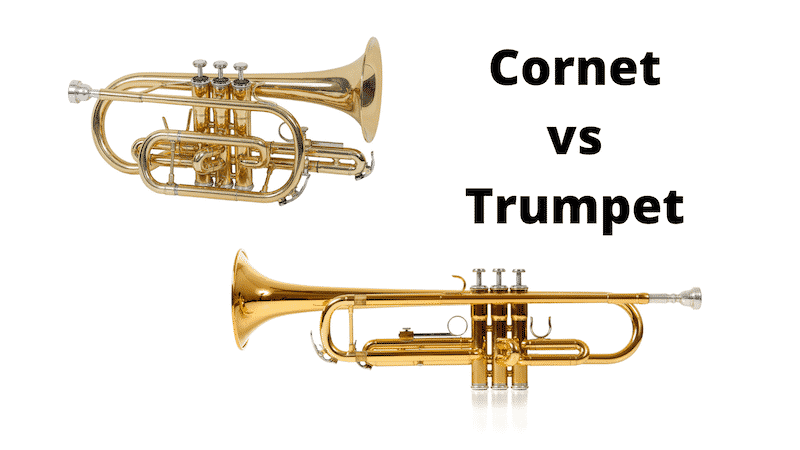
Identical Elements
Although the Cornet is not a type of trumpet, lots of Cornet players will also play the Trumpet, and that’s because many of the main characteristics of the instruments are identical.
At the most basic level, they are both brass instruments, which are played by buzzing the lips into a mouthpiece connected to a length of brass tubing with a flare at the far end.
Further to this, both instruments have the same length of tubing (1.48 metres, or 4 feet 10 inches), which means that they are both in B flat: when you play a low C on either instrument, it will sound the same as the B flat on a piano.
Actually, both instruments are also made in a variety of other keys, but let’s not complicate things too much!
They also both are played in the same way, with three valves operated by the right hand to lower the pitch of a note by a tone, semitone, or tone and a half respectively.
Both instruments are usually made with piston valves that move up and down, rather than the rotary valves more common to French horns (although some trumpets are made with rotary valves too).
All of this means that the technical aspects of playing both instruments are essentially the same: every note is played with the same combination of valves and embouchure.
Therefore, any piece written for Cornet can be played on Trumpet, and vice versa.
The differences between the instruments are much more subtle.
They’re more to do with small changes in how the instrument feels to the player and sounds to the listener, which has led composers and musicians to use the Trumpet and Cornet for different musical purposes.
Bore Shape
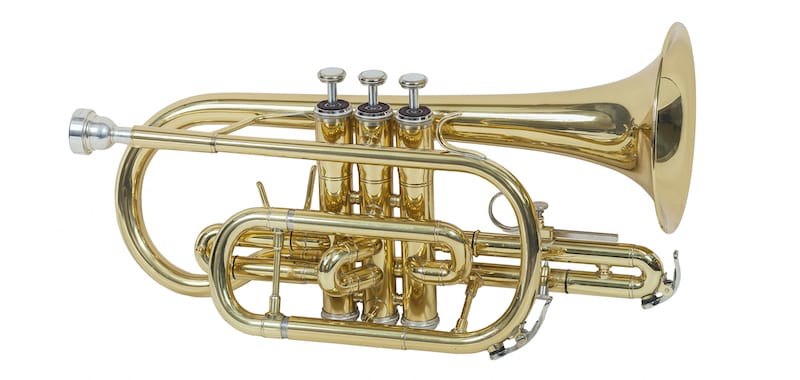
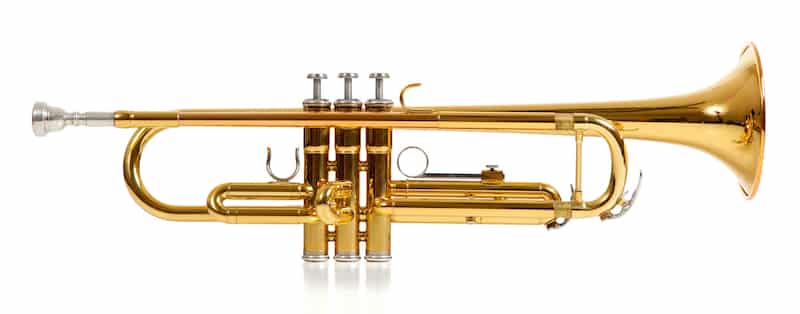
The main physical difference between the instruments is the bore shape: the width of the tube and how that changes along its length.
The Trumpet has a cylindrical bore.
This means that, for most of its length, the width of the tube remains the same, not getting wider or narrower.
Only for the last third of the instrument’s length does the bore widen into the distinctive flare of the bell.
The Cornet, on the other hand, has a conical bore.
Instead of staying a constant width, the tube begins widening halfway along its length, before widening more dramatically at the bell.
While both instruments have a similar width at the leadpipe (mouthpiece end) and bell (sound-producing end), this slight variation in where the increase in width begins creates a corresponding difference in sound.
The cylindrical bore of the Trumpet creates more high-frequency sounds, which gives the instrument its bright, piercing timbre.
Whereas the Cornet, with the more conical shape of the tube, has a softer tone that contains a lower level of high-frequency sound.
It doesn’t sound like much of a difference, but it’s enough to give both instruments a distinctive tone colour that means they are both suited to playing slightly different music.
But more on that later!
The tubing of each instrument is wound in a slightly different shape – the Cornet is shorter and slightly taller on the Trumpet.
However, this doesn’t have any impact on the sound of the instruments, only a slight difference in the weight distribution which affects the feel for the player.
Mouthpiece Shape
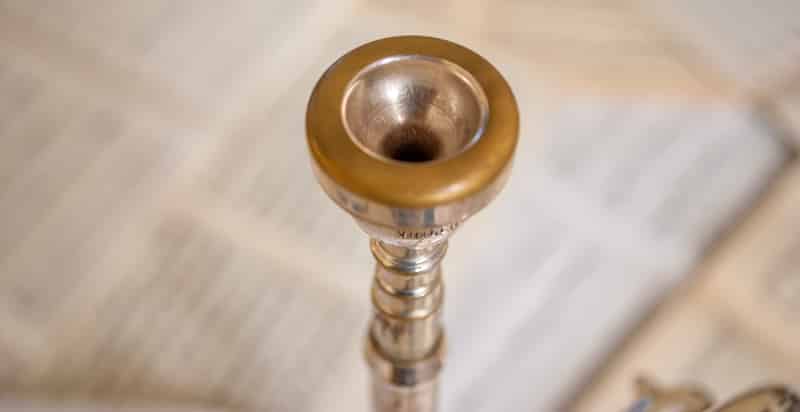
Trumpets and Cornets have slightly different mouthpiece shapes, which are designed to match and exaggerate their different timbres.
Trumpet mouthpieces are designed to emphasize the bright sound of the Trumpet.
They usually have a shallow U-shaped cup (inside of the mouthpiece) and a longer and slightly narrower throat (the narrow part of the mouthpiece).
The effect of this is air is directed into the instrument more sharply, creating strong vibrations and a clear tone.
Cornet mouthpieces, on the other hand, have a deeper V-shaped cup and a shorter, wider throat, which smoothes the passage of air into the instrument.
This creates a deeper, richer tone than the trumpet, but also requires more air and effort from the player to produce a sound, particularly at loud volumes or higher notes.
There is a wide variety of shapes and sizes of mouthpiece available for both instruments.
So while the above trends are the most common shapes, many manufacturers also make Trumpet-shaped mouthpieces for Cornets, and vice versa.
This can be done to make it easier for players to double on both instruments, or to help emulate the sound of the other instrument.
History
While both instruments are commonly played by the same musicians, the Trumpet and the Cornet actually have quite different histories.
The earliest Trumpets date back thousands of years and were used in all sorts of religious and military ceremonies and occasions across many different cultures.
For most of this history, the Trumpet was a simple tube shape with a flared bell at the end, that could only produce a few notes.
This changed in the early nineteenth century, when manufacturers began to make instruments with valves that allowed them to produce all the notes of the chromatic scale.
Trumpet manufacturers were slower to pick up on this trend, and so this left a gap for the introduction of the Cornet, which is actually developed from the Horn (the word ‘Cornet’ is French for ‘Horn’).
As composers began to include these new instruments in their orchestral compositions, they included parts for both Cornets and Trumpets.
Often, the Cornet parts will make more use of the valves, playing melodic phrases and more subtle musical passages, while the Trumpet parts will have a more traditional role of providing fanfares and accents.
Examples of orchestral works with Trumpet and Cornet parts included Berlioz’s Symphonie Fantastique (1830), Tchaikovsky’s Capriccio Italien (1880), Vaughan Williams’ A London Symphony (1913) and Prokofiev’s Romeo and Juliet (1935).
While the Trumpet is more well-known for its famous players, from Maurice André and Håkan Hardenberger in classical music to Miles Davis in jazz (and indeed Wynton Marsalis in both!), the Cornet also has plenty of aficionados too.
Louis Armstrong began as a Cornet player before later switching to the Trumpet – this was actually part of a wider shift from early New Orleans jazz, which favoured the Cornet, to later swing and be-bop styles which almost exclusively used the Trumpet.
One of the most famous Cornet players was Herbert L. Clarke, an American cornet virtuoso born in the mid-nineteenth century, who toured across the world in Sousa’s band and as a soloist.
His books of technical exercises and studies are still revered and played today by Trumpet and Cornet players alike.
Where They’re Found
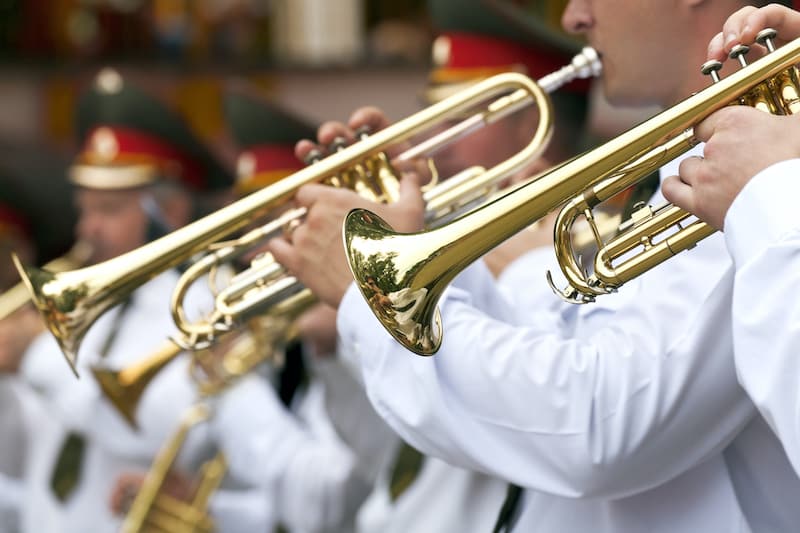
The brighter, louder sound of the Trumpet and the warmer, softer sound of the Cornet make them suited to slightly different uses.
The Trumpet, of course, has become the more well-known of the two instruments.
Its bright tone is well suited to cutting through a large orchestra at moments of high drama, and to hold its own amidst the drums, piano, and amplified guitars of pop and jazz.
As instrument manufacture and playing standards have improved over the last century, players have been able to overcome the difficulty of playing quietly, such that it is also capable of being an instrument of great subtlety and expression.
In addition to being found in symphony orchestras and jazz bands, the trumpet has gained an increasing reputation as a solo instrument.
Many well-known composers of the twentieth century have written concertos for trumpet and orchestra, as well as solo pieces for trumpet alone.
Although the Cornet hasn’t gained such widespread reputation or use, it has not been neglected in the last century by any means.
The Cornet has become the calling card of the Brass Band, an ensemble of around thirty musicians combining cornets, tenor horns, trombones, euphoniums, and tubas with percussion.
In Brass Bands, the warm tone of the Cornet is more suited to blending with itself in larger sections, or with other instruments to create a unified, harmonious sound.
Here’s a video of the Cornet playing in a brass band so you can hear the warm tone.
The Cornet is also used in large wind ensembles (commonly called Concert Bands or Wind Orchestras), in combination with Trumpets.
Often their roles are divided as in mid-nineteenth century orchestral music, where Cornets will have more melodic material, and Trumpets are saved for more fanfare-like material.
Which is More Popular
While each instrument has its own unique characteristics, the Trumpet has certainly gained a much wider reputation both as a solo instrument and in symphony orchestras.
There are many examples of famous Trumpet music in the world of film, pop and classical music (e.g. the main theme to Star Wars, Haydn’s Trumpet Concerto, the Beatles’ Penny Lane), and famous trumpet players who have made a name for themselves in the wider musical world.
However, the Cornet has maintained its own distinctive personality and repertoire, particularly in the Brass Band world.
Conclusion
So now we’ve learnt about a few of the similiarities and differences between Trumpets and Cornets, and how that’s influenced the music that they are used for.
Lots of brass musicians will switch between both instruments regularly, and find that they give access to a broad and rich range of musical repertoire.
Now that you’re an expert on Trumpets and Cornets, you might like to listen to some examples of both instruments, and see if you can hear the difference for yourself!

